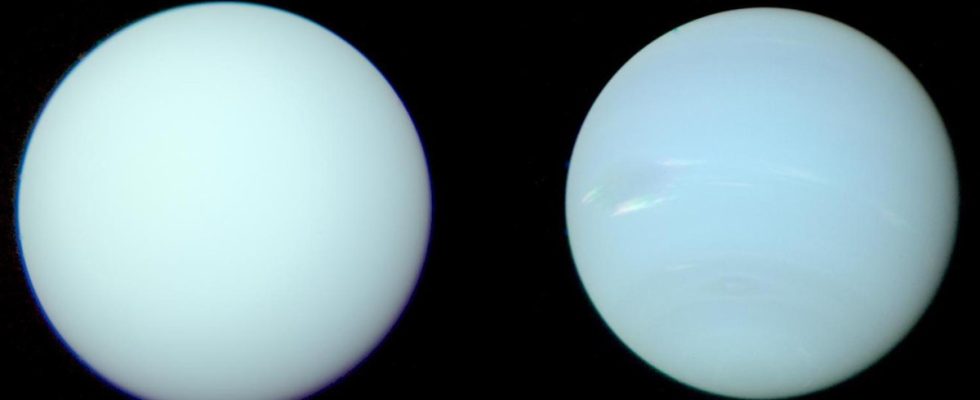In contrast to Uranus, the ice giant Neptune has a strong azure color. At least that’s what the previous images from the US space probe Voyager 2 show. This means that the planet’s color differs significantly from the much brighter Uranus, with its pale cyan color. As it now turns out, that is wrong.
Out of a new study An international research team shows that the two ice giants are much closer in color than previously thought. Both worlds have a similar greenish-blue hue. This also fits in with the similar atmospheres of both ice giants.
The original images do not represent true colors
Voyager 2’s monochrome images were later recombined to create composite color images. But these were not always precisely balanced. That’s why they couldn’t generate an authentic color image. They had shown Neptune in particular too blue. To make the clouds, bands and winds that shape our current image of Neptune more visible, the Neptune images captured by the spacecraft were highly contrast-enhanced.
It has long been known in the astronomical community that most modern images of the two planets do not accurately represent their true colors. “Although the artificially saturated color was well known among planetary scientists at the time – and the images were published with explanatory captions – this distinction had been lost over time.”explains Patrick Irwin from the University of Oxford in a press release.
On the way to the new picture
“By applying our model to the original data, we were able to reconstruct the most accurate representation of the color of Neptune and Uranus to date”, continues Irwin. To do this, the research team used data from the STIS (Space Telescope Imaging Spectrograph) on the Hubble Space Telescope. They also accessed the data from the Muse (Multi Unit Spectroscopic Explorer) from the VLT (Very Large Telescope) of the European Southern Observatory Eso.
In both instruments, each pixel represents a continuous color spectrum. This allows the true colors of Uranus and Neptune to be better represented. The research team compared the data with Hubble’s Voyager 2 camera and WFC3 (Wide Field Camera 3).
The result: Neptune and Uranus have a similar color. The main difference is that Neptune has a slight hint of additional blue. According to the model, this can be attributed to a thinner layer of haze on this planet.

